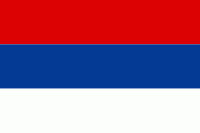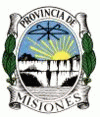Misiones Province (Misiones Province)
 |
 |
This was an early area of Roman Catholic missionary activity by the Society of Jesus in what was then called the Province of Paraguay, beginning in the early 17th century. In 1984 the ruins of four mission sites in Argentina were designated World Heritage Sites by UNESCO.
Indigenous peoples of various tribes lived in the area of the future province for thousands of years. At the time of European encounter, it was occupied by the Kaingang and Xokleng tribes, later followed by the Guarani tribe. The first European to visit the region, Sebastian Cabot, discovered Apipé Falls while navigating the Paraná River in December 1527. In 1541 Álvar Núñez Cabeza de Vaca reached the Iguazú Falls.
In the 17th century, members of the Society of Jesus came to the region as missionaries, initially led by Diego de Torres Bello. They began to establish a string of Jesuit Reductions, most notably that of San Ignacio. In a few years they set up 30 mission villages. They taught the Guarani western-style agriculture and crafts. Their crafts were sold and traded along the river and they shared in the Reductions' prosperity.
In 1759 the Portuguese government, at the insistence of its anti-Jesuit Secretary of State, the Marquis de Pombal, ordered all Reductions closed in its territory (which then included much of present-day Misiones Province). The Marquis eventually prevailed in 1773 on Pope Clement XIV to have the Jesuit Order suppressed. With the abandoning of the missions, the prosperous trade surrounding these Reductions quickly vanished. Colonists imposed a brutal plantation economy in the region, forcing the Guarani to act as slave labor.
In 1814, Gervasio Posadas, the Director of the United Provinces of the Río de la Plata, declared Misiones annexed to Argentina's Corrientes (at this time Argentina was quasi-independent but nominally still a Spanish colony). Argentina did not exert de facto control over Misiones, which was claimed by several countries and effectively governed itself. In 1830 Argentine military forces from Corrientes Province took control of Misiones.
In 1838 Paraguay occupied Misiones, claiming the area on the basis that the Misiones population consisted of indigenous Guarani, the major ethnic group of Paraguay. In 1865 Paraguayan forces invaded Misiones again in what became the War of the Triple Alliance (1864–1870). Following the defeat of Paraguay and its peace agreement with Argentina (eventually signed in 1876), Paraguay gave up its claim to the Misiones territory.
Although Argentina had claimed Misiones since 1814, academics tend to interpret Argentine possession of Misiones as beginning with the defeat of Paraguay in the War of the Triple Alliance. Bethell writes that "the treaty of alliance [i.e. against Paraguay] contained secret clauses providing for the annexation of disputed territory in northern Paraguay by Brazil and regions in the east and west of Paraguay by Argentina... After a long and harrowing war (1865–70), Argentina got it from a prostrate Paraguay territory in Misiones." Scobie states that "the political status of Misiones remained vague" and that Argentina gained the region "as a by-product of the Paraguayan war in the 1860s".
The War of the Triple Alliance left Paraguay much impoverished, and Misiones benefited economically from belonging to Argentina. In 1876 the Argentine President Nicolás Avellaneda, assisted by his close friend, General Pietro Canestro (an Italian nobleman who devoted much of his life and wealth to the achievement and sustainability of the peace in the region), proclaimed the Immigration and Colonization Law. This law fostered the immigration of European colonists in order to populate the vast unspoiled Argentinian territories.
Several colonizing companies formed under this law. One of them, Adolf Schwelm's ''Eldorado Colonización y Explotación de Bosques Ltda. S.A.'', founded the city of Eldorado in 1919 with a port on the Upper Paraná. Its agricultural colonies and experimental farms, the orange- and grapefruit-tree plantations, and the cultivation of yerba mate, the mills and the dryers for such product are characteristic of this area. Swedish-Argentines became well known for growing yerba mate.
Map - Misiones Province (Misiones Province)
Map
Country - Argentina
 |
 |
| Flag of Argentina | |
The earliest recorded human presence in modern-day Argentina dates back to the Paleolithic period. The Inca Empire expanded to the northwest of the country in Pre-Columbian times. The country has its roots in Spanish colonization of the region during the 16th century. Argentina rose as the successor state of the Viceroyalty of the Río de la Plata, a Spanish overseas viceroyalty founded in 1776. The declaration and fight for independence (1810–1818) was followed by an extended civil war that lasted until 1861, culminating in the country's reorganization as a federation. The country thereafter enjoyed relative peace and stability, with several waves of European immigration, mainly Italians and Spaniards, radically reshaping its cultural and demographic outlook; over 60% of the population has full or partial Italian ancestry, and Argentine culture has significant connections to Italian culture.
Currency / Language
| ISO | Currency | Symbol | Significant figures |
|---|---|---|---|
| ARS | Argentine peso | $ | 2 |
| ISO | Language |
|---|---|
| EN | English language |
| FR | French language |
| DE | German language |
| GN | Guarani language |
| IT | Italian language |
| ES | Spanish language |















